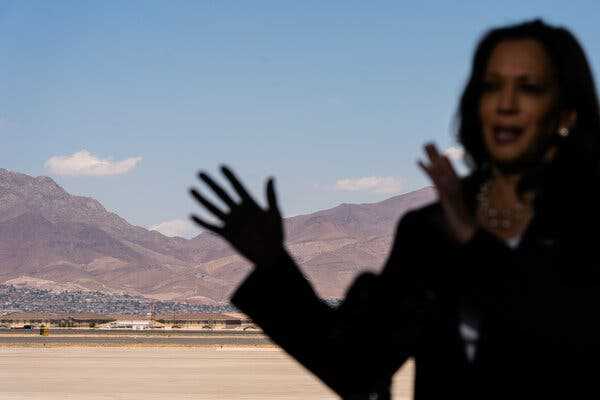Republicans blame Vice President Kamala Harris for the surge of migrants into the United States over the past several years. But a review of her involvement shows a more nuanced record.
Listen to this article · 8:07 min Learn more
- Share full article

Vice President Kamala Harris during a 2021 visit to El Paso, Texas, near the border with Mexico. She had previously resisted visiting the area, despite being tasked with a migration-related portfolio.
As they seek effective attack lines against Vice President Kamala Harris, Republicans are focusing on her role in the Biden administration’s border and immigration policies, seeking to blame her for the surge of migrants into the United States over the past several years.
A review of her involvement in the issue shows a more nuanced record.
President Biden did not assign her the job title of “border czar” or the responsibility of overseeing the enforcement policies at the U.S.-Mexico border, as the Trump campaign suggested on Tuesday in its first ad against her. But she did have a prominent role in trying to ensure that a record surge of global migration did not become worse.
After the number of migrants crossing the southern border hit record levels at times during the administration’s first three years, crossings have now dropped to their lowest levels since Mr. Biden and Ms. Harris took office.
Her early efforts at handling her role and the administration’s policies were widely panned, even by some Democrats, as clumsy and counterproductive, especially in displaying defensiveness over why she had not visited the border. Some of her allies felt she was being set up to fail.
Early in the administration, Ms. Harris was given a role that came to be defined as a combination of chief fund-raiser and conduit between business leaders and the economies of Guatemala, Honduras and El Salvador. Her attempt to convince companies across the world to invest in Central America and create jobs for would-be migrants had some success, according to immigration experts and current and former government officials.
But those successes only underlined the scale of the gulf in economic opportunity between the United States and Central America, and how policies to narrow that gulf could take years or even generations to show results.
We are having trouble retrieving the article content.
Please enable JavaScript in your browser settings.
Thank you for your patience while we verify access. If you are in Reader mode please exit and log into your Times account, or subscribe for all of The Times.
Thank you for your patience while we verify access.
Already a subscriber? Log in.
Want all of The Times? Subscribe.
SKIP ADVERTISEMENT
Source: nytimes.com



